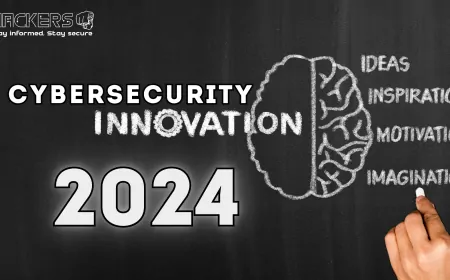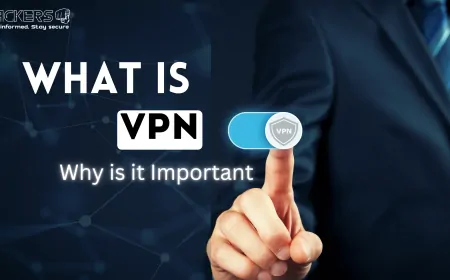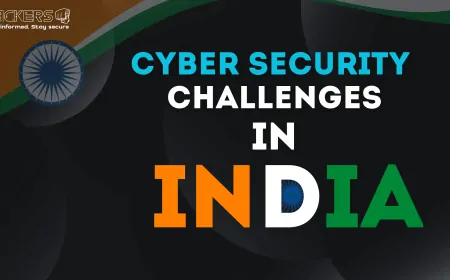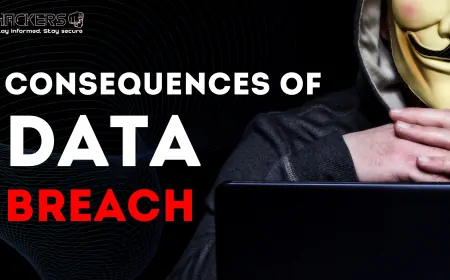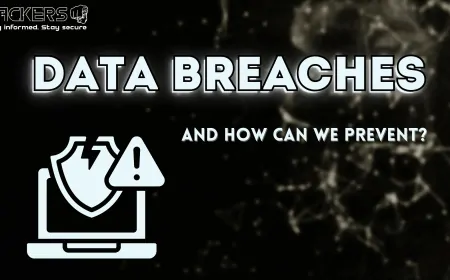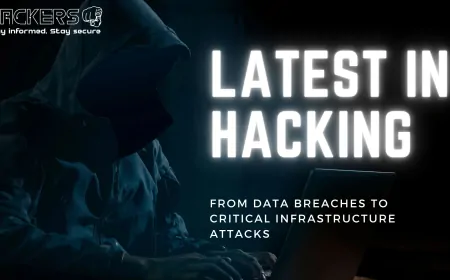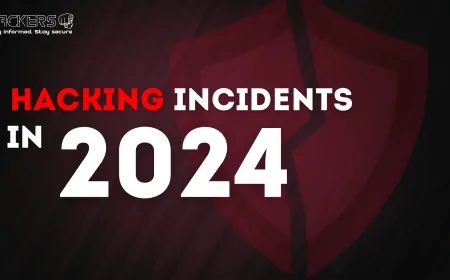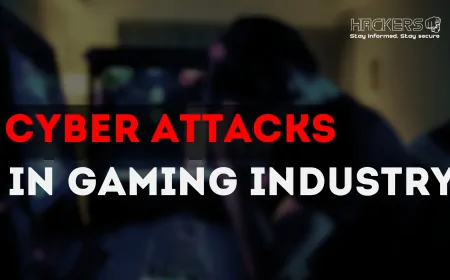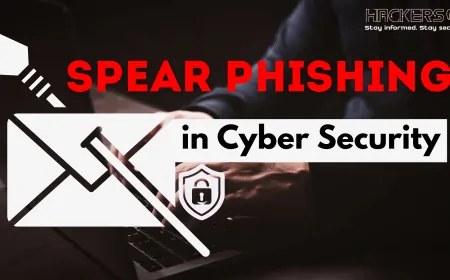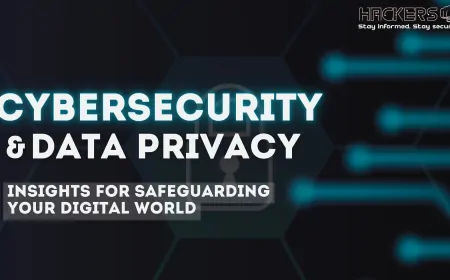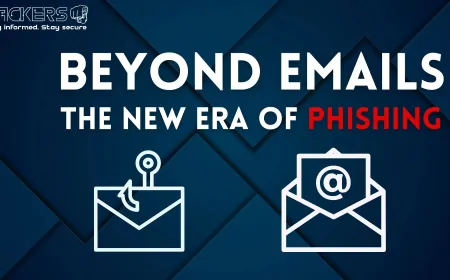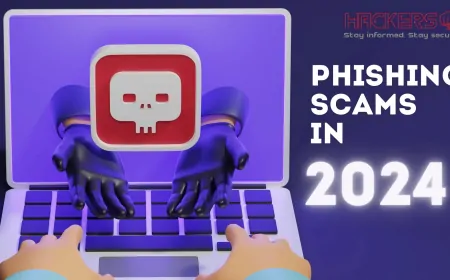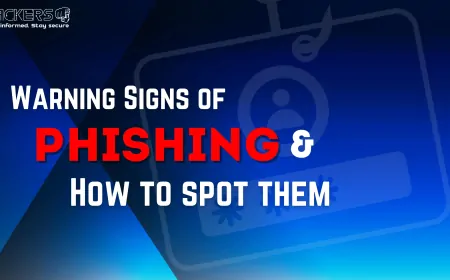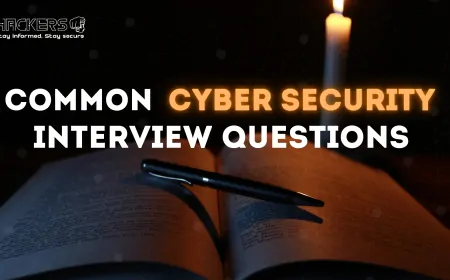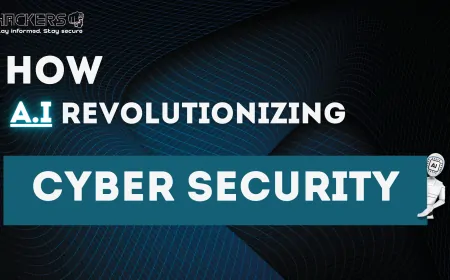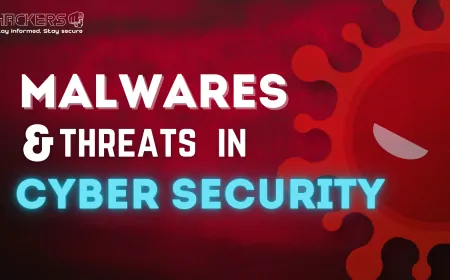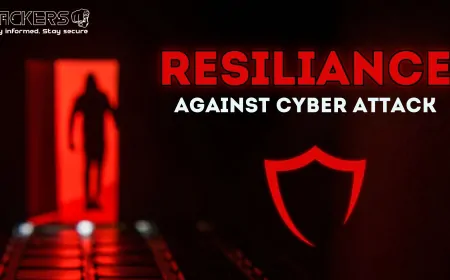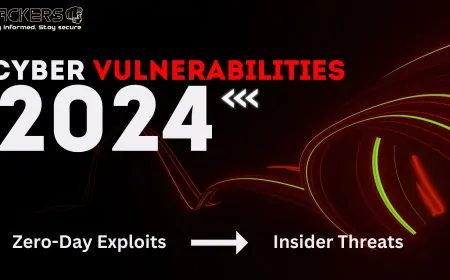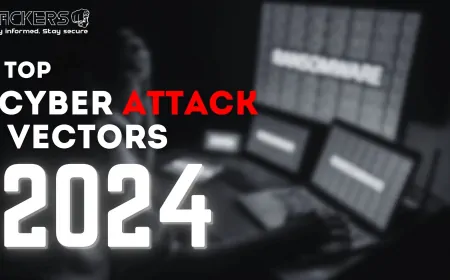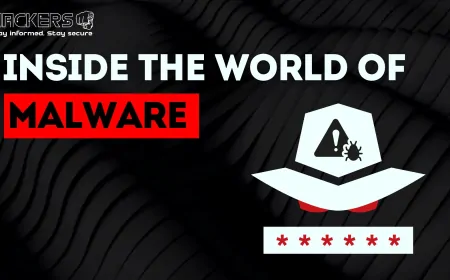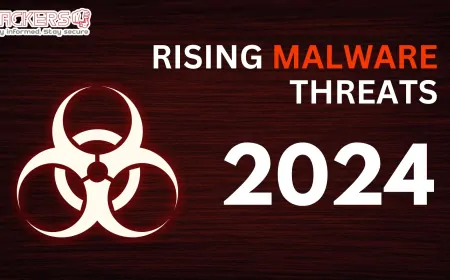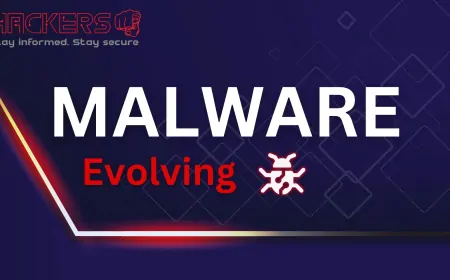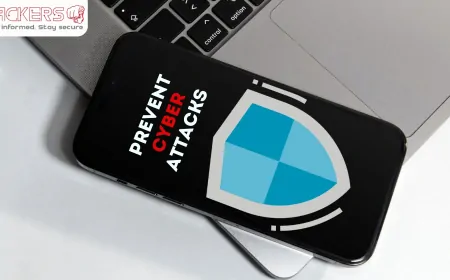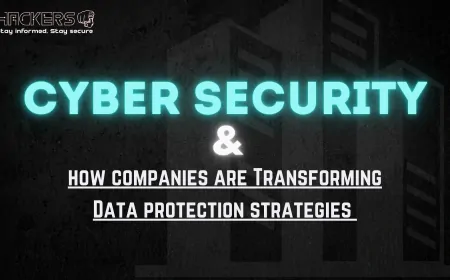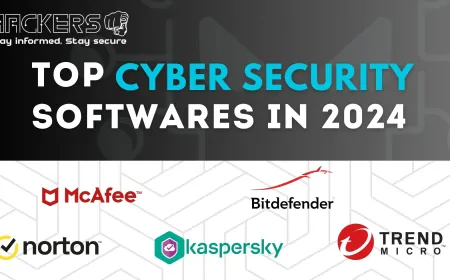The Future of Cybersecurity: Emerging Threats and How to Prepare
Explore the future of cybersecurity and emerging threats including advanced persistent threats, ransomware evolution, AI-powered attacks, and more. Learn how to prepare with advanced threat detection, employee training, and adopting Zero Trust architecture. Stay ahead of challenges like IoT vulnerabilities, cloud security issues, and quantum computing threats with effective strategies and solutions.

Introduction
As the digital landscape continues to evolve, so too does the realm of cybersecurity. The rapid advancement of technology brings with it a host of emerging threats that challenge traditional security measures. From sophisticated ransomware attacks to the potential impact of quantum computing, understanding these future threats is crucial for maintaining robust security. This article delves into the key emerging cybersecurity threats and provides actionable strategies for preparing and protecting against these evolving risks. By staying informed and proactive, organizations and individuals can better navigate the complexities of the cybersecurity landscape and safeguard their digital assets.
As technology continues to advance at a rapid pace, the landscape of cybersecurity is evolving to address new and increasingly sophisticated threats. Understanding these emerging threats and preparing effectively is crucial for organizations and individuals aiming to safeguard their digital assets. This article explores the anticipated future of cybersecurity, highlighting emerging threats and offering strategies for preparation.
What is Cybersecurity?
Cybersecurity refers to the practice of protecting systems, networks, and data from digital attacks, damage, or unauthorized access. As technology becomes increasingly integral to our personal and professional lives, the need to safeguard sensitive information and ensure the integrity of digital operations has never been more crucial. Cybersecurity encompasses a broad range of measures, strategies, and technologies designed to defend against various types of cyber threats.
Key Aspects of Cybersecurity
Confidentiality
- Definition: Ensures that sensitive information is accessible only to authorized users. It involves protecting data from unauthorized access and ensuring that private information remains confidential.
- Techniques: Encryption, access controls, and secure authentication methods.
Integrity
- Definition: Ensures that data is accurate and unaltered during storage, transmission, or processing. It involves protecting data from being modified or corrupted by unauthorized individuals.
- Techniques: Hashing, checksums, and digital signatures.
Availability
- Definition: Ensures that data and systems are accessible to authorized users when needed. It involves maintaining the uptime and reliability of systems and services.
- Techniques: Redundancy, backup solutions, and disaster recovery plans.
Authentication
- Definition: Verifies the identity of users, devices, or systems before granting access to resources. It ensures that only legitimate entities can access sensitive information or systems.
- Techniques: Passwords, biometrics, multi-factor authentication (MFA).
Authorization
- Definition: Determines the level of access granted to authenticated users or systems. It ensures that users have permissions to perform specific actions or access certain resources.
- Techniques: Role-based access control (RBAC), access control lists (ACLs).
Non-repudiation
- Definition: Ensures that actions or transactions cannot be denied after they have occurred. It provides proof of the origin, integrity, and validity of data.
- Techniques: Digital signatures, audit trails.
Types of Cybersecurity Threats
- Malware: Malicious software designed to damage or disrupt systems, such as viruses, worms, and ransomware.
- Phishing: Deceptive attempts to obtain sensitive information by masquerading as a trustworthy entity in electronic communications.
- Denial of Service (DoS) Attacks: Attempts to make a service or network unavailable by overwhelming it with traffic.
- Man-in-the-Middle (MitM) Attacks: Intercepting and altering communication between two parties without their knowledge.
- Insider Threats: Security risks posed by individuals within the organization, such as employees or contractors, who misuse their access to data or systems.
Importance of Cybersecurity
Cybersecurity is vital for protecting personal privacy, maintaining the integrity of digital transactions, and ensuring the continuity of critical services. As cyber threats become more sophisticated, robust cybersecurity measures are essential to defend against potential breaches, safeguard sensitive data, and preserve trust in digital systems and services.
In summary, cybersecurity is a multifaceted field that encompasses various strategies, technologies, and practices aimed at protecting digital assets from a wide range of threats. By implementing effective cybersecurity measures, organizations and individuals can enhance their security posture and mitigate the risks associated with the ever-evolving digital landscape.
Emerging Threats in Cybersecurity
Advanced Persistent Threats (APTs)
- Description: APTs involve highly skilled attackers who maintain a long-term presence within a network to steal sensitive information or disrupt operations. These threats are often state-sponsored or carried out by organized crime groups.
- Trend: Increasingly sophisticated techniques, including social engineering and zero-day exploits, are making APTs more challenging to detect and mitigate.
Ransomware Evolution
- Description: Ransomware attacks are evolving from encrypting data to exfiltrating sensitive information and threatening to release it unless a ransom is paid.
- Trend: The rise of Ransomware-as-a-Service (RaaS) has lowered the barrier to entry for attackers, making it easier for individuals with limited technical expertise to launch ransomware attacks.
AI-Powered Attacks
- Description: Cybercriminals are leveraging artificial intelligence (AI) and machine learning to automate attacks, create sophisticated phishing schemes, and develop new malware variants.
- Trend: AI-powered attacks can quickly adapt to defenses and create highly convincing social engineering attacks, increasing their effectiveness.
Internet of Things (IoT) Vulnerabilities
- Description: The proliferation of IoT devices introduces numerous entry points for attackers, many of which lack robust security features.
- Trend: As IoT devices become more prevalent, they present a growing target for cybercriminals seeking to exploit weaknesses in connected systems.
Cloud Security Challenges
- Description: The shift to cloud computing brings concerns about data breaches, misconfigured cloud settings, and insecure APIs.
- Trend: As organizations increasingly rely on cloud services, securing cloud environments and ensuring compliance with data protection regulations become critical.
Quantum Computing Threats
- Description: Quantum computing has the potential to break current encryption algorithms, posing a significant risk to data confidentiality.
- Trend: While still in its early stages, quantum computing research is progressing, and preparing for post-quantum cryptography is becoming essential.
Deepfakes and Synthetic Media
- Description: Deepfakes use AI to create convincing but fake media, which can be used for misinformation, fraud, and reputational damage.
- Trend: The growing sophistication of deepfake technology makes it increasingly difficult to distinguish between real and fabricated content.
How to Prepare for Emerging Threats
Implement Advanced Threat Detection Systems
Action: Invest in advanced threat detection and response tools that utilize AI and machine learning to identify and mitigate sophisticated threats in real-time.
Regularly Update and Patch Systems
Action: Ensure that all systems, including IoT devices and cloud environments, are regularly updated and patched to address known vulnerabilities.
Enhance Employee Training and Awareness
Action: Conduct regular cybersecurity training and awareness programs to help employees recognize phishing attempts, social engineering, and other common attack vectors.
Adopt Zero Trust Architecture
Action: Implement a Zero Trust security model that requires continuous verification of users and devices, regardless of their location within or outside the network.
Develop an Incident Response Plan
Action: Create and regularly update an incident response plan to quickly and effectively respond to cybersecurity incidents and minimize their impact.
Invest in Cloud Security Solutions
Action: Use comprehensive cloud security solutions to protect data, manage access, and ensure compliance with relevant regulations.
Prepare for Quantum Computing
Action: Stay informed about developments in quantum computing and explore post-quantum cryptographic algorithms to future-proof data security.
Monitor and Analyze Emerging Threats
Action: Continuously monitor threat intelligence sources and cybersecurity research to stay informed about new and evolving threats.
Conclusion
The future of cybersecurity is marked by increasingly complex and sophisticated threats. By understanding these emerging threats and taking proactive measures to prepare, organizations and individuals can enhance their defenses and better protect their digital assets. Embracing advanced technologies, implementing robust security practices, and staying informed about the latest developments are essential steps in navigating the evolving cybersecurity landscape. As we look ahead, a proactive and adaptive approach to cybersecurity will be crucial in addressing the challenges of tomorrowThe future of cybersecurity is marked by a rapidly changing threat environment, driven by technological advancements and evolving attack methods. Addressing emerging threats such as advanced persistent threats, AI-powered attacks, and vulnerabilities associated with IoT and cloud computing requires a proactive and adaptive approach. By implementing advanced detection systems, continuously updating security measures, and investing in employee training, you can enhance your defenses against these sophisticated risks. Staying ahead of cybersecurity challenges is essential for ensuring the safety and resilience of your digital infrastructure in an increasingly complex world.
FAQs
1. What are Advanced Persistent Threats (APTs)?
Answer: Advanced Persistent Threats (APTs) are prolonged and targeted cyberattacks where attackers maintain a covert presence within a network to steal sensitive information or disrupt operations. These threats are often highly sophisticated and can be state-sponsored or carried out by organized crime groups.
2. How is ransomware evolving, and what does Ransomware-as-a-Service (RaaS) mean?
Answer: Ransomware is evolving to include not just data encryption but also data exfiltration, where attackers steal and threaten to release sensitive information. Ransomware-as-a-Service (RaaS) is a model where attackers offer ransomware tools and infrastructure to other criminals, making it easier for less experienced individuals to launch ransomware attacks.
3. What role does AI play in emerging cybersecurity threats?
Answer: AI is used by cybercriminals to automate attacks, create sophisticated phishing schemes, and develop advanced malware. AI-powered attacks can adapt quickly to security defenses and execute highly convincing social engineering tactics, increasing their effectiveness.
4. Why are IoT devices considered a security risk?
Answer: IoT devices often have limited security features and can serve as entry points for attackers. As the number of connected devices grows, so do the opportunities for cybercriminals to exploit vulnerabilities and compromise networks.
5. What are the cloud security challenges organizations face?
Answer: Cloud security challenges include data breaches, misconfigured cloud settings, and insecure APIs. As more organizations adopt cloud services, securing these environments and ensuring compliance with data protection regulations becomes critical.
6. How might quantum computing impact cybersecurity?
Answer: Quantum computing has the potential to break current encryption algorithms, posing a significant risk to data confidentiality. Preparing for quantum computing involves exploring and implementing post-quantum cryptographic algorithms to protect data in the future.
7. What are deepfakes, and why are they a concern?
Answer: Deepfakes are AI-generated synthetic media that can create convincing but fake images, audio, or videos. They pose a threat by being used for misinformation, fraud, and reputational damage, making it difficult to distinguish between real and fabricated content.
8. How can organizations prepare for emerging cybersecurity threats?
Answer: Organizations can prepare by implementing advanced threat detection systems, regularly updating and patching systems, enhancing employee training, adopting Zero Trust architecture, developing incident response plans, investing in cloud security solutions, and staying informed about emerging threats.
9. What is Zero Trust architecture, and why is it important?
Answer: Zero Trust architecture is a security model that requires continuous verification of users and devices, regardless of their location within or outside the network. It is important because it reduces the risk of insider threats and limits the potential impact of a breach by assuming that threats could be present both inside and outside the network.
10. How can individuals stay informed about emerging cybersecurity threats?
Answer: Individuals can stay informed by following cybersecurity news and threat intelligence sources, participating in industry forums and webinars, subscribing to cybersecurity newsletters, and engaging with professional communities to stay updated on the latest developments and best practices.
What's Your Reaction?








